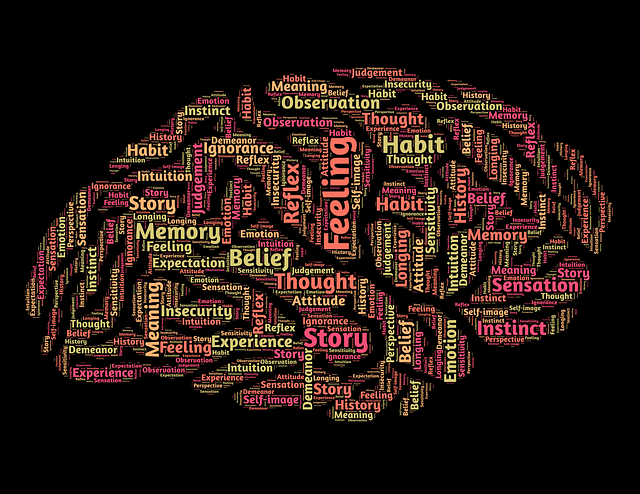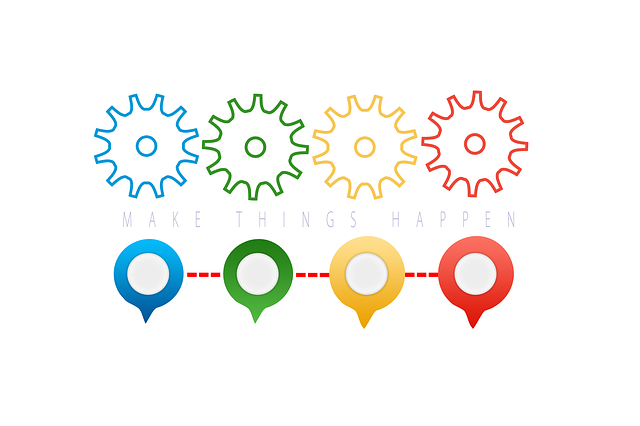Culture is the basis on which human beings conduct their normal social life. The greatest desire of every normal human being in social life is the pursuit of a happy and fulfilling life. Culture is the most basic guarantee of social life and the most basic means of pursuing a happy life. Only by ceaselessly creating and accumulating their own culture and constantly improving their cultural system can human beings make their social life more harmonious and beautiful. A correct understanding of the basic functions of human culture and the basic laws of its creation and development is undoubted of great importance to the promotion of the healthy development of human culture.
The overall analysis is based on the different functions of culture: human culture specifically contains three categories or concepts: firstly, the category of intellectual culture, secondly, the category of technological culture, and thirdly, the category of conceptual culture.
The culture of the knowledge culture category is called knowledge culture, which arises from people’s knowledge of the objective reality of objective things and their phenomena, and its cultural functions and cultural forms are expressed in the cognition and memory of the objective reality of objective things and the concrete results of cognition and memory. Culture in the sphere of technological culture is called technological culture, which arises from people’s awareness of how to use the objective reality of objective things in order to improve the efficiency of their subjective behavior, and its cultural function is expressed in the improvement of the efficiency of people’s subjective behavior, and its cultural form is expressed in the accumulation of experience and innovation of people’s subjective way of behavior.
The culture in the category of conceptual culture, called conceptual culture, arises from people’s knowledge of how they conduct their social life, and its cultural function is expressed in the guidance of the principles of people’s subjective behavior, and its cultural form is expressed in people’s ideology and subjective aspirations in their social life. The culture of knowledge enables people to know what kind of objective things are in their living environment and what kind of objective characteristics these objective things have. A culture of ideas, so that people know who and what they want to be and what they need in life.
A technical culture, so that one knows how to do what one wants and how to get what one wants. The cultural context of every normally living person in social life necessarily includes all three spheres of culture, one without the other.
I. Culture of knowledge

The product of man’s objective and real knowledge of objective things and their objective phenomena is the culture of knowledge, simply It is called knowledge. The act of knowing the objective reality of things and their phenomena is driven by man’s desire to know. Knowledge is a system of cognitive functions. Knowledge is the reflection of the objective phenomena inherent in the human cognitive function system. Or In other words, knowledge is the description of the objective phenomena of objective things by human beings.
The development of a culture of knowledge is based on man’s subjective The practical need for a true and comprehensive reflection of the objective reality inherent in objective things is the goal of Man’s knowledge of objective things is based on man’s perception of them. The human being first perceives the objective through the sensory organs The human being is able to create knowledge of objective things only on the basis of his or her senses. Because of the limitations of the sensory organs The human sensory organs can only respond to some of the objective realities of some of the objective things. sensory responses, but not too many other objective realities of many other objective things, so that Therefore, the knowledge of many objective realities can only be gradually deepened through cognitive function. In contrast to the objective, The only criterion for testing the correctness and comprehensiveness of knowledge is whether it is correct or incorrect, whether it is comprehensive or partial. The only criterion for testing the correctness and comprehensiveness of knowledge can only be the objective reality of objective things. Man’s knowledge of objective things is based on The goal is to reflect the objective reality of objective things in a comprehensive and correct manner. The ultimate means of testing knowledge can only be a man The ultimate test of knowledge can only be one’s effective perception of the objective reality of things.
II. Technological Culture

The product of man’s awareness of how to improve the efficiency of his subjective behavior, with the aim of actively realizing his subjective aspirations The product of this is technoculture or technology for short. The innovative development of technology is based on the maximization of man’s The goal of innovative technological development is to maximize the efficiency of subjective human behavior in the domination and transformation of objective things. The creation of tools and their use is the most
typical of human technological cultures.
In terms of morphological characteristics, technology can be divided into two types. One type is that which is characterized by the coordination, precision, and mastery of the subjective movements of the human organism. and skilfulness of the human organism: the tightrope walking of acrobats, the culinary skills of chefs, the calligraphy and painting of painters, the artisan’s The techniques of acrobats, chefs, calligraphers and painters, artisans, etc. These techniques can be described as technical skills. In order to achieve a high level of skills, everyone must go through a long process of observation and repeated practice, which is why This is the reason why some high-level technical skills are often easily lost. Another type of technology is that which is essentially characterized by the use of knowledge or a combination of knowledge: farmers use the wind to separate grain and chaff, boatmen use boats to transport goods, housewives use wood for fuel, etc. This type of technology can be called knowledge-based technology. The distinguishing feature of knowledge-based technology is the use of certain knowledge, or the combination of several kinds of knowledge, and the clever use of the natural power of objective things to effectively improve the efficiency of human subjective behavior. For people with a certain level of knowledge and culture, knowledge-based technology can usually be acquired by simply observing and learning. This is the reason why knowledge-based technologies can be easily disseminated and accumulated after they have been invented and created.
In practice, the technologies that people have acquired are usually both technical and knowledge-based. In many fields of practical technology, the contribution of knowledge-based technology to the improvement of technical effectiveness is usually much greater than the contribution of skill-based technology. Every substantial advance in practical technology is usually due to a leap forward in knowledge-based technology. Every substantial advance in practical technology is usually the result of a leap forward in knowledge-based technology. There is an objectively greater potential for innovation in knowledge-based technology than in skill-based training. The phrase “knowledge is power” illustrates the crucial role of knowledge-based technologies in the advancement of practical technologies. For a practical technology, the level of advancement of the knowledge-based technologies within it represents the overall level of advancement of that technology.
A rich culture of knowledge is conducive to innovation in knowledge-based technologies. However, people learn knowledge and innovate technology from different cognitive functions. Some people are good at acquiring knowledge – they do well in their studies – but are poor at innovating technological practices. Some people are not good at acquiring knowledge but are good at innovating technology. Some are good at both acquiring knowledge and innovating technology. Some are not good at acquiring knowledge but not good at innovating technology. Innovation in technology has as its fundamental goal the improvement of the efficiency of subjective human behavior. Therefore, the most fundamental criterion for testing the performance and evaluating the value of a technology is its effectiveness in improving the efficiency of subjective human behavior. If it is more effective, it is called “advanced”, if it is less effective, it is called “backward”, if it has a function, it is called “correct”, if it does not have a function or has the opposite function, it is called “If there is a function, it is called ‘correct’, and if there is no function or the opposite, it is called ‘wrong’.
III. Culture of perception

In real life, the product of a person’s perceptions of what subjective desires and subjective behavior they should produce is a culture of perceptions or simply perceptions. A very important “spiritual phenomenon” is the human “ego” feeling. All subjective actions of man arise from his subjective desires. A certain subjective desire of man arises from a certain form of his “ego”. The “ego” of man in a certain form arises from the idea of man in a certain form. A certain objective thing, for a certain form of “self”, is expressed in a certain form of interest and value. Therefore, concepts are often referred to as “values”. Without concepts, people will not have a clear sense of “self”, they will not have subjective wishes and subjective behavior, that is, there will be no “seven feelings and six desires”, and the existence of life will be meaningless for the “self”. The existence of life would have no meaning for the “self”.
One’s conceptual form defines one’s ‘ego’. The result of the recognition and confirmation of one’s interests in the form of the ‘self’ is the concept. Conceptions contain the identification of the form of the ‘self’ and the identification of the interests of the ‘self’ in relation to the environment in which it lives. The concept is the subjective criterion by which the “self” strives for its interests. What objective things make the ego feel happy, what objective things make the ego feel painful, what objective things make the ego What objective things make the “ego” feel beautiful, what objective things make the “ego” feel ugly, and so on. It all depends on what kind of perception one has formed. There are three ways in which perceptions are formed. The first is through the indoctrination of others: in social life, through systematic cultural In social life, through systematic cultural education, others continue to inculcate a particular conception, which leads to the acceptance and possession of that conception. Secondly, they are influenced by the perceptions of others: in their interaction with others, people are usually influenced by the perceptions of others (as expressed through their subjective behavior) and accept their perceptions. Thirdly, self-awareness of life feelings: in social life, people usually have self-awareness of their own feelings acquired in life practice, that is, they “reflect” on their own life experience and “feel”, so that they have certain forms of ideas This is the “reflection” and “perception” of one’s own life experience, which leads to the production of certain forms of perception. Different people, due to their different life circumstances and life experiences, have different self-understandings of their life practices and will form different forms of perceptions. People with different conceptions will form different forms of “self”, will have different subjective desires, will have different value judgments about the same objective things, and will show different behavioral attitudes. different behavioral attitudes. For example, some people think that doing good deeds to help the poor and needy is “accumulating negative virtue” and is good for them, so they always actively engage in it. Some people think that it is a waste of money and a loss of profit for them, so they always treat it negatively. This difference in perception is the fundamental reason why some people behave in social life as virtuous and others as evil.
People with different conceptual forms are bound to have conflicts of thought in their subjective behavior due to their different subjective desires and different value judgments on objective things. People who share the same conceptual form are bound to compete for interests because they share a certain “low” conceptual form. Conflicting ideas and competing interests are the sources of endless man-made suffering and disaster in people’s social lives. The most fundamental and effective way to eradicate this source of evil is for people to share a common conception of a “noble” form and a common system. The conceptual and “ego” forms of man are “illusory” and “spiritual phenomena” of man. There is no specific objective reality that can be used as a criterion to distinguish the “right”, “wrong”, “wrong”, “straight” and “straight” forms of perception. “This is the most distinctive essence of conceptual culture. This is one of the most striking and essential features of conceptual culture.
Learn well and feel free to comment.







